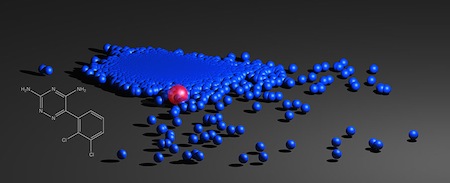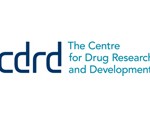
In this diagram, each blue dot represents an existing drug molecule that was screened for its ability to disrupt the ribosomes of bacteria. The red dot shows the successful compound, lamotrigine (molecular structure at left) which is already used as an anticonvulsant drug. (Image credit: Shawn French, McMaster University)
Researchers screening old drugs for new uses have found one that offers a previously untapped strategy for preventing the growth of harmful bacteria.
Many antibiotics work by interfering with the bacterial ribosome, a kind of biochemical workshop where proteins and enzymes needed for the growth of the bacterium are produced. In this case, the team wanted a drug that would prevent the bacterial ribosome from forming in the first place, rather than just mess with its functioning.
The researchers set up an experiment to screen thousands of already-approved drugs for their ability to do this and found one – lamotrigine, currently used an anticonvulsant drug – capable of doing so. The result offers a new strategy to help fight bacterial infections, which could be critical in the face of increasing bacterial resistance to existing antibiotics.
Original research paper published in eLife on September 18, 2014.
Names and affiliations of selected authors

